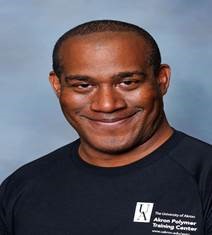*** Please note, each row and course# listed below is a separate, complete course. ***
An Introduction to Continuous Vulcanization And CV Processes
| Course# | Date | Time | Location |
|---|---|---|---|
| 128-1129 | 07/07/2025 - 07/07/2025 | 8:00 AM - 4:00 PM | Microsoft Teams |
| 128-1128 | 10/03/2025 - 10/03/2025 | 8:00 AM - 4:00 PM | Microsoft Teams |
Online Registration
CEU's: 0.8
Instructor: Mr. Christopher Paige
Course Overview
This course is intended to introduce students to the continuous vulcanization processes which includes definitions, diagrams. LCM, HAV and Microwave/HAV. Extrusion Screws, Extrusion Dies, Extrusion cooling temperature controls and post-processing equipment will also be discussed. Elastomers, Fillers, Process Oils, Plasticizers and Curing Ingredients and compound details will also be reviewed.
Online Course Requirements
We want you to have a great experience participating in our remote (online) courses, and for that, you’ll need the right equipment and internet connection.
Minimum needs are:
- A broadband internet connection that has at least a 2 Mbps upload and download speed.
- A computer (PC or Mac) that can support the latest web browser versions.
- At least 4 GB of RAM and adequate hard drive space.
- A microphone and a speaker.
- International Students: For virtual (online) courses, an additional fee will be assessed to cover the cost of shipping the professional binder (presentation slides), to your address. The cost of international shipping can be significant.
For more information, visit our Online Course Requirements webpage.
Instructor Biography:

Christopher (Chris) Paige holds a M. S. Degree in Plastics Engineering - 2005 (University of Massachusetts – Lowell) and a M.S. Degree in Polymer Chemistry – 1991 (University of Cincinnati). He is a member of Society of Plastics Engineers (SPE), American Chemical Society (ACS) and America Society of Materials (ASM) and has over 30 years’ experience, working in Industry. As a Laboratory Manager, at the University of Akron, Chris performed numerous hands-on plastics processing projects, for domestic and International corporate clients. He is a subject matter expert on Single Screw Extrusion, Twin Screw Extrusion, Blown Film Processing, 3-D Printing, Thermoforming and Injection Molding. Chris also trained Graduate and Undergraduate students on the hands-on operation of Large scale plastic processing equipment and characterization equipment (Thermal Analysis and mechanical Inston), while at the University of Akron.
- Terminology and Definitions: Vulcanization, Extruder Equipment, Hot Feed Process and Cold Feed process.
- Process Diagram – The basic diagram of a Multistep Rubber Extrusion process and a Continuous Rubber Extrusion process.
- Overview of Multistep Rubber Processes and Continuous Rubber Extrusion Processes.
- Multistep Rubber Extrusion: Hot Feed Process and Cold Feed Process.
- Continuous Rubber Extrusion Processes: Ballotini, Electron Beam, Quartz-Hot Air, Steam Tunnel, Rotocure and Double Belt Press.
- Raw Materials Used for Rubber Extrusion: Elastomers, Fillers, Process Oils, Plasticizers and Curing Ingredients.
- Review of Rubber Extrusion Technology- Positives, Negatives and Potential Uses, Compound Details.
